Top 6 North Idaho Cutthroat Flies
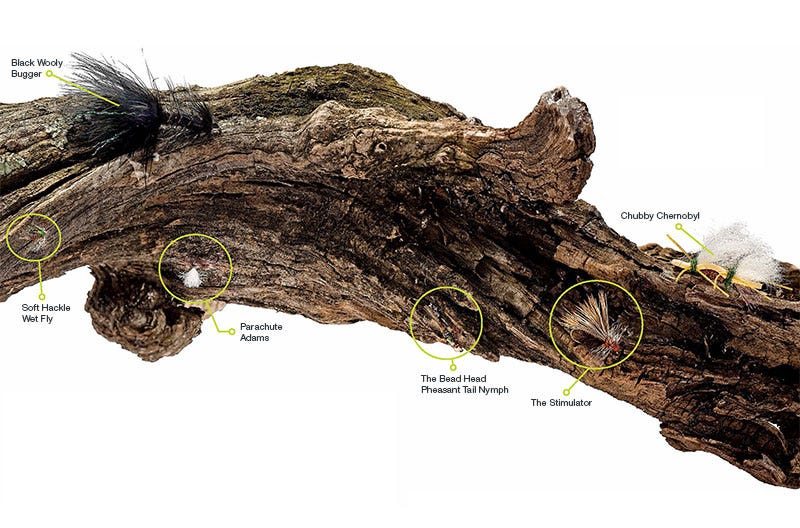

This topic has been debated for many hours behind the wheel, on guided trips, and over cold ones after a long day on the river. We all have our favorite flies and when we open the fly box, it seems like our fingers almost tractor beam to certain flies. After many years here in northern Idaho, guiding and spending time on the water, I think the flies I have chosen for the top six in north Idaho will be recognized by most. If you are new to the sport, this will be a great way for you to get pointed in the right direction. You will always find these flies in our fly bins at North 40 because they flat-out-catch-fish. I’m sure this will cause some raised eyebrows from some hardcore northern Idaho folks, or maybe you’ll agree with me? Either way, you will always see these in my fly boxes.
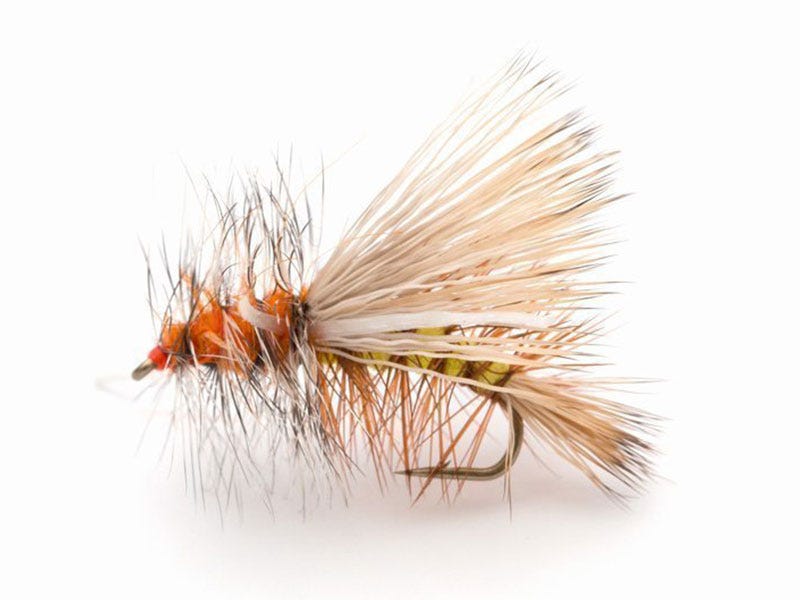
The Stimulator
This fly was designed by Randall Kauffmann of Kauffmann’s Streamborn fly shop in Seattle. I believe Randall came up with this fly in the late 70’s, or early 80’s? I bet you’d have a hard time walking into any fly shop, in the west, and not see this fly. It has all the characteristics of a great trout fly. From the high floating elk hair wing and tail, to the palmered hackle body, the poly-pro body wrap, and the hackled front portion, this fly is a classic.
Now, where the true argument lies is in the color and the size. If I had to pick one color and one size I’d probably go with a #10 in orange, especially if it had rubber legs too. Now, the rubber legs are breaking tradition a bit but the beauty of them is that if you don’t like them, just pull them off.
A fly that has stood the test of time, do you have it? Check out the Stimulator fly here.
The cool thing about this fly is that it can represent a variety of different bugs. The stimulator is a great stonefly pattern. It is ideal to fish in a big format let’s say, a #6 in orange which is a great pattern for a salmon fly. It is also good in a yellow size #8 for a golden stone, a size #14 or #16 yellow sallie, or an olive in a size #8 for a skwala. It is also a great pattern for October caddis in the fall. The list for the stimulator goes on and on. I have very fond memories when I first moved to north Idaho. After work, I would fish the lower Coeur d’Alene until dark. I would twitch and swing an orange stimulator through the riffles and it would drive the cutthroat nuts. The fly can emulate a small caddis too. This fly has every reason to be in your box and we’ll let you decide in what size and color.
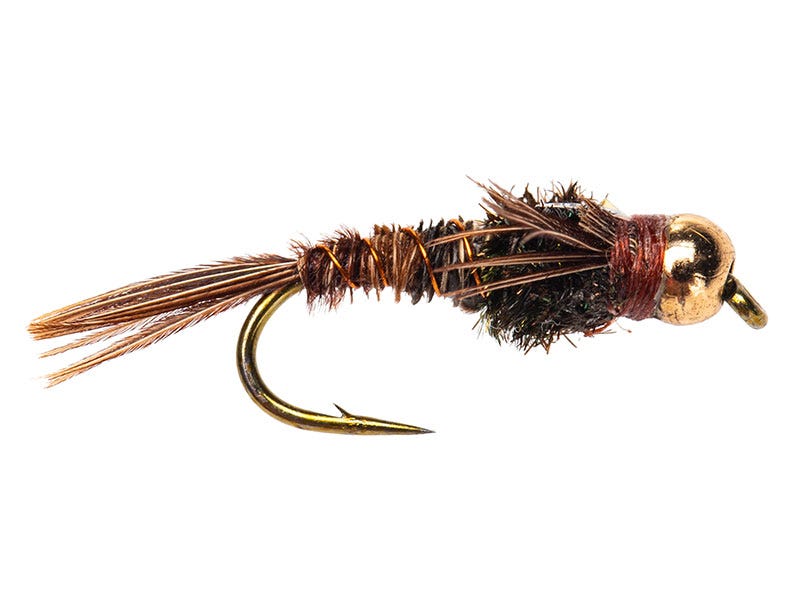
The Bead Head Pheasant Tail Nymph
Perhaps one of the most versatile flies in north Idaho, the bead head pheasant tail nymph can be fished as a dropper, traditionally nymphed under an indicator, or swung through riffles. Trout eat under water for most of their life, and cutthroat can’t resist this fly. If I had to choose one size, it would be a #12. This size will cover most mayfly nymphs, small stonefly nymphs, and caddis too. This fly is available in many different sizes and I normally have a selection of #8’s all the way down to #20’s. Plus, this fly will fish year around. From early Spring tandem nymph rigs to a dropper under a chubby chernobyl, this fly is incredible.
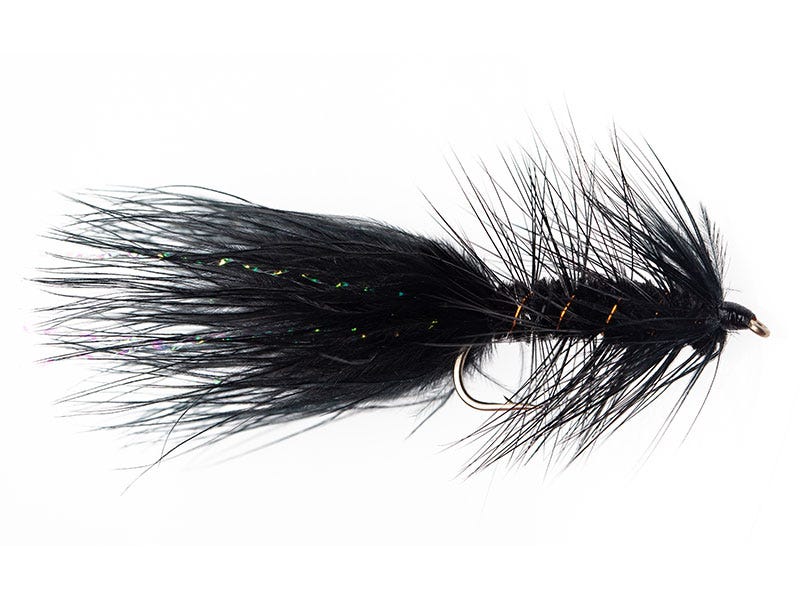
Black Wooly Bugger
The black wooly bugger is tied for second place as my favorite, next to a soft hackle, which is next on the list. This fly is one of the most recognized flies ever made. I prefer mine to have rubber legs and again, like on my stimulators, at any time you can take the legs off. I love dead drifting it under an indicator early in the year, trailing it with a bead head pheasant tail nymph. This is one of my go-to rigs out of my drift boat in high water. Warm water fish like them as well; crappie, bass, perch, pike, and the trout in our lakes absolutely love them. The go-to size I’d have is a #6 on a 3X long hook (which is standard). Black, again, is my favorite but olive would be my runner-up. White is also a great option for lakes when targeting panfish, crappie, perch, and bluegill.
Do you have the flies you need for your next trip? Check out our selection of flies.
This fly can represent a multitude of different food options for fish. In our local trout streams, it can resemble a leech, a baitfish, or a sculpin. With rubber legs, it can pass for a stonefly nymph or possibly a crayfish too. You may have heard the saying, “Big fish like big food.” Enter the wooly bugger. The variations are endless in size and color. I have a size range in my box from a #12 up to a #2. I also have two or three boxes dedicated to just wooly buggers.
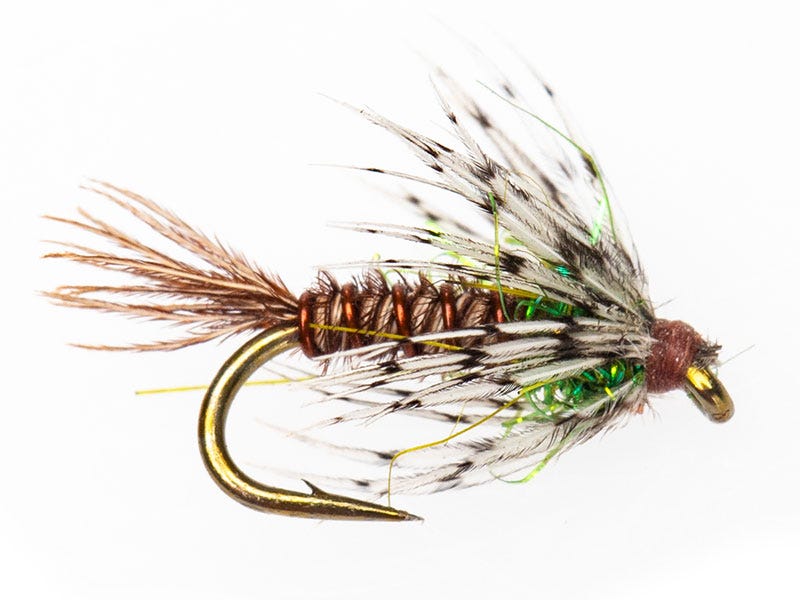
Soft Hackle Wet Fly
I am an admitted soft hackle addict. When I learned of the powers of this fly, and how to fish it, I knew it would be a staple for me for the rest of my life. The soft hackle is a very old style of fly. Traditionally referred to as a wet fly, the soft hackle doesn’t sink fast or float high. It normally rides just under the surface representing an emerging larva.
No trout on Earth can refuse this fly. Learn to tie your own soft-hackle pattern here.
My favorite size and style of this would be in a #12 pheasant tail style body. I have many other styles and sizes in my box, but I always seem to gravitate to the pheasant tail soft hackle. The soft hackle is a versatile fly that can be used as a dropper, swung on a tight line, or nymphed. Usually, I will start at the top of a run or riffle and quarter my cast down and across the current and simply swing the fly through the run. When the fish eat the fly, they are aggressive and explosive at times too. With beginners, this is a great technique since there is no need to worry about a dead drift or watching your fly. This an awesome pattern and an angler here in north Idaho should have a bunch of these at the ready.
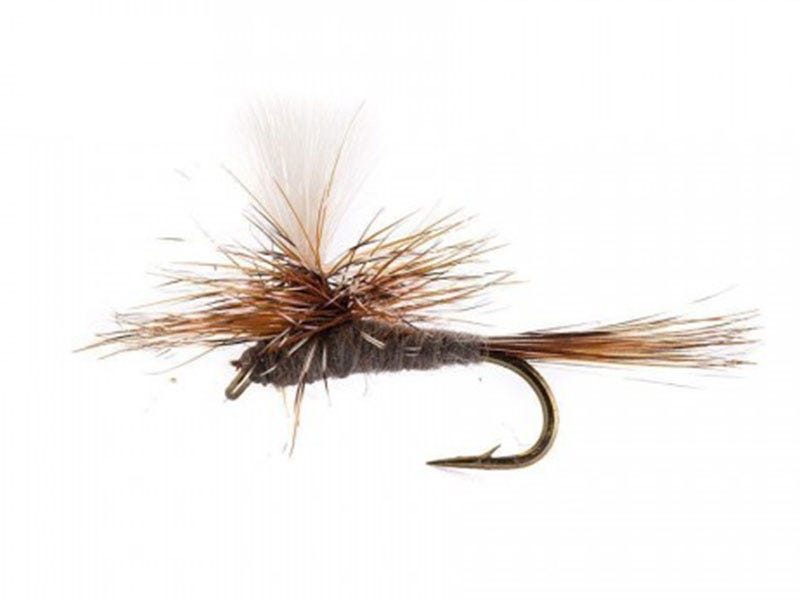
Parachute Adams
Another well-recognized fly is the parachute adams. This fly will cover most of your mayfly needs when the fish are feeding on the surface. The parachute style of this classic is easy to see, and it floats well. Like the others I have mentioned, I like to have a variety of sizes in my box from a #8 down to a #20. This fly can pass for many different mayflies such as; tricos, pale morning duns, blue winged olives, callibaetis, gray drakes, green drakes, and many more.
You will typically need to pre-dress these with some sort of silicone floatant and re-dress as you catch fish throughout the day. You can run a small dropper, like a soft hackle or a small bead headed nymph behind it, depending on the size of the dry fly to hold it up. Also, you’ll want to learn to use a powder or desiccant type fly dry. This will help make sure to get as much of the water and fish slime off the fly after you catch a fish. It will also keep your adams riding high throughout the day.
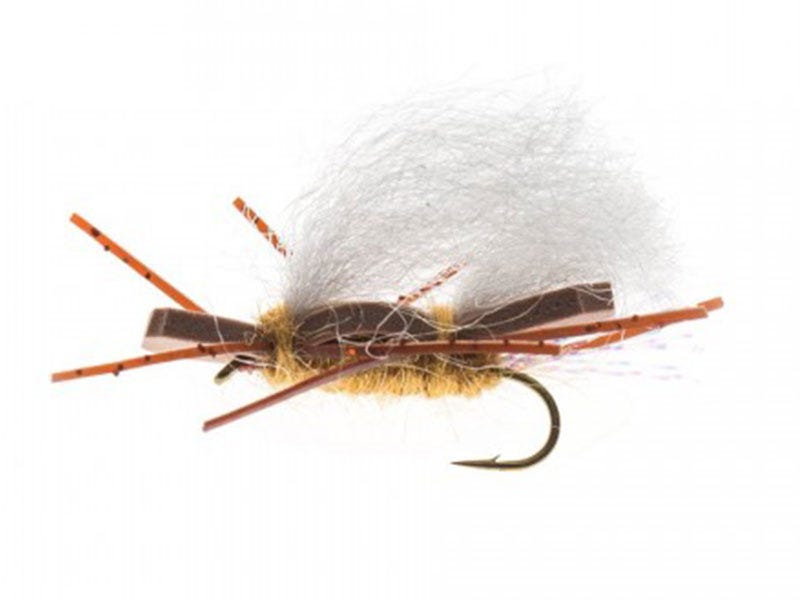
Chubby Chernobyl
This is a fish catching machine and it has completely revolutionized dry fly fishing when it was introduced. This fly imitates many different bugs that live along the rivers and streams of the northwest such as; stoneflies, grasshoppers, beetles, bees, crickets, and others. Fish in north Idaho have a tough time resisting it. Extremely high floating with a bushy poly-pro wing and a foam body the “chubby” has a hard time sinking. It is a descendant of the chernobyl. The original chernobyl did not have the double poly wing. It would ride very flat in the water.
There's a reason we featured this fly as our Fly of the Week. Check out what makes this fly a go-to.
Seldom do I just let my fly sit still. I really like to give it a twitch every so often. These flies really scream stonefly. If you’ve been in any sort of stonefly hatch, you will notice the naturals do not sit still on the water. They are always moving about and typically don’t make it very far when the trout are in the mood. I like to tie mine with the legs just a little longer than most, so they flex well with very little movement. I’ve found the shorter legs don’t seem to have as much action. This is a killer fly to run a bead head nymph as a dropper off of it. It floats so well, that with the bigger sizes, you can put a very large nymph under them. I even tie a version I call the bobber bug. It’s basically a chubby chernobyl with more than the usual amount of poly-pro for the wing.
We carry a large selection of the chubby chernobyl and you’d be hard-pressed to come into the shop and not see any you wouldn’t want.
So, there you have it. These are my top six north Idaho flies. These flies should always be at hand in your boxes. Heck, I hear Montana fish like them too. These are staples. If you are needing direction on what to choose to get started, these are it. Swing in some time to the shop on your way to the creek and pick some up. Fish them with confidence and catch fish.
